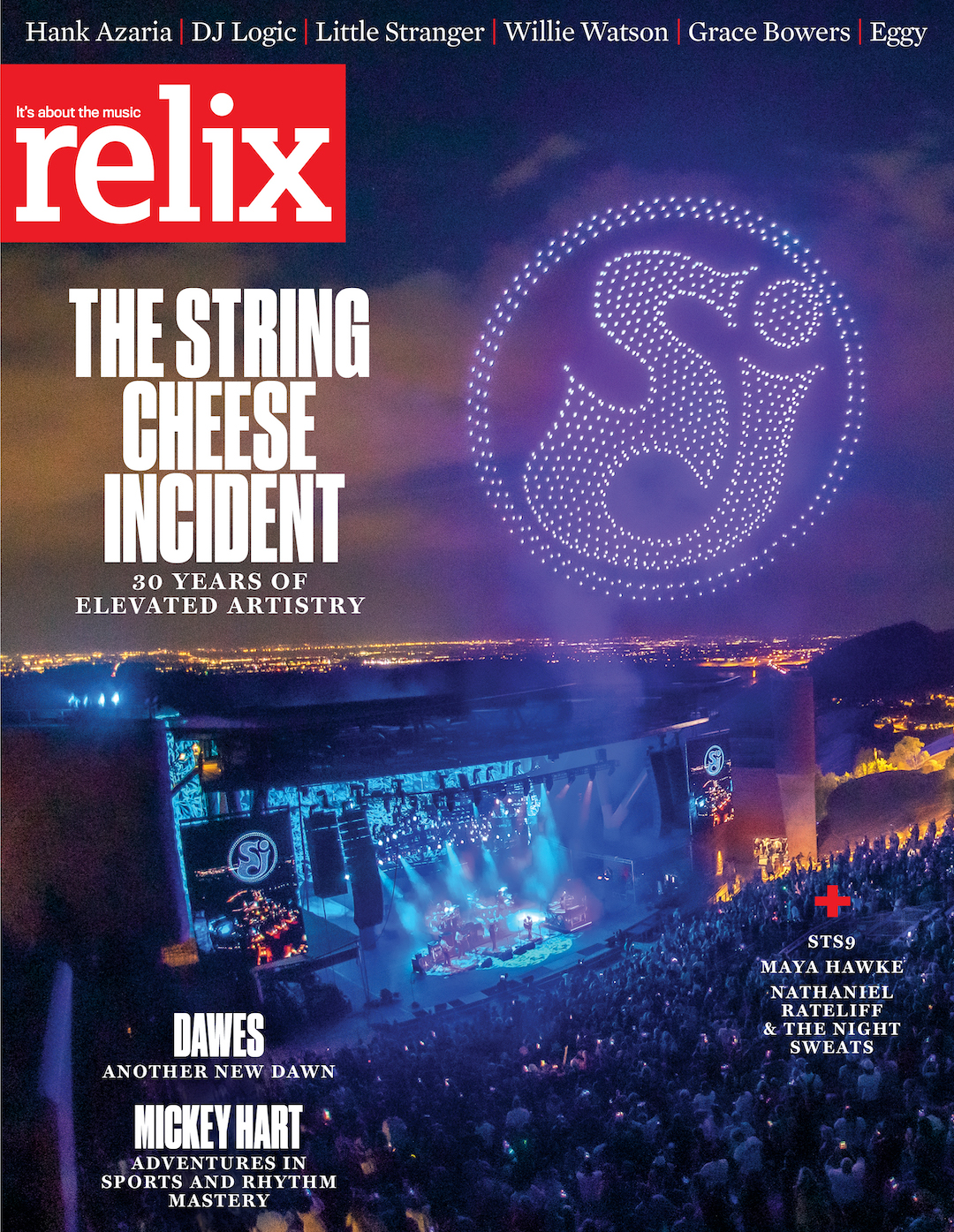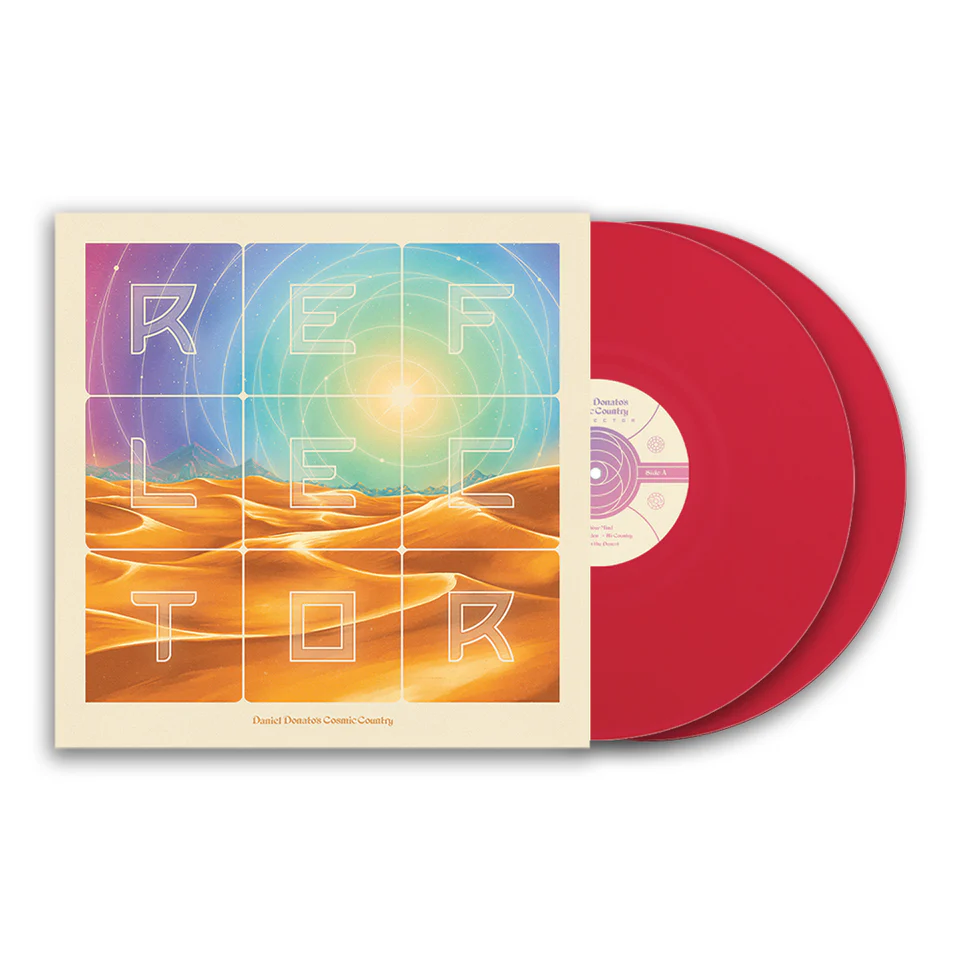Temples: Time Is A Light

photo: Molly Daniel
***
On paper, it was already something of a neo-psych dream team: Temples, a quartet of cosmic hook-sculptors partnering with producer Sean Ono Lennon, best known for his shapeshifting solo work and collaborations with Primus’ Les Claypool. But when everyone finally hit Lennon’s fanciful New York studio, first for Temples’ 2020 single “Paraphernalia,” their own chemistry became real—based largely on a mutual love of sonic science.
Everywhere the band turned, there was some cool-looking instrument to pick up and fiddle with or some wacky device to spark their imagination. And some of those new sounds wound up populating their follow-up collaboration, Temples’ fourth LP, the ATO release Exotico—pushing these adventure-seekers into a new dimension of trippiness. The best example, even if it’s tough to pinpoint in the final mix, is the “Marvin,” a stainless-steel Hollywood artifact used in Foley sound design for horror films. As singer/multi-instrumentalist James Bagshaw recalls, Temples were fascinated at first sight, and they managed to sneak it into the bridge of their already-heady powerhouse “Cicada.”
“It was just in the middle of the studio at Sean’s,” he says of the instrument. “It looked like a steampunk barbecue. Percussion is a big part of what we’ve always done, and we fall into the tropes like everyone does—the shakers, the tambourines, the sleigh bells, the congas, the bongos, the woodblocks, the cow bells. But the Marvin, that’s very different. When you see something like that, you want to put it on there.”
Multi-instrumentalist Thomas Walmsley looks back at their experimentation with a laugh. “[The Marvin] is a metal contraption with strings and various things you hit, and it creates those quaking, unnerving sounds,” he says. “It’s the most musical, least musical thing you’ve ever heard. It’s one of many absolutely mad instruments that Sean had at his studio. Apart from all the amazing vintage equipment he had, the maddest thing—and sadly we ran out of time to use it—is a Tesla coil. You can put keyboards or guitars through it, and you switch the light off and see your sounds traveling through it electronically through sparks. It emits ozone, and obviously that’s very dangerous so it’s probably best we didn’t use it.”
Like many of their psychedelic peers, Temples—also featuring multi-instrumentalist Adam Smith and drummer Rens Ottink—love chasing bold sounds for the sake of it. But since the beginning, they’ve typically done so in a tight verse chorus format, never skimping on melody while they tinker. Bagshaw and Walmsley, who’d both bounced around the scene in their hometown of Kettering, England, joined forces in 2012, landing a deal with the renowned Heavenly Recordings— who have also released music by Doves, Manic Street Preachers, King Gizzard & The Lizard Wizard—on the strength of their self-produced, YouTube-posted tracks. They gradually gained momentum: making the typical late-night show rounds, playing big-name festivals, getting namedropped by massive celebrities (Oasis’ Noel Gallagher gushed about their live show to NME), releasing three albums that playfully pounced from ‘60s-leaning haze (2014’s Sun Structures) to synthfueled sizzle (2017’s Volcano). All the while, they maintained a rare level of control, continuing to self-produce instead of handing the reins to a big-name veteran.
“Ultimately, you assume the purest version of music is doing it yourself as a group,” Bagshaw says. “But that’s probably naive because some of the greatest music ever is a collaboration. George Martin was a part of The Beatles’ sound throughout. I think we would have been hesitant about working with a producer—[even though] there are plenty of producers in England who would do our thing or at least get close to the world in which we operate musically.”
But they were always conceivably willing to bring in that outside voice, assuming they ever found one that excited them. And they felt an immediate, vibrant connection with Lennon, whom they met during the 2019 installment of California festival Desert Daze.
“We were playing, and he was there with The Claypool Lennon Delirium. After they played, we sort of hung out and wandered around the festival—chatting, swapping ideas,” Walmsley says. “You know when you meet someone and they just get you completely? It felt like, creatively, he just understood us from a few conversations.”
Bagshaw recalls bonding over specific sonic touchstones: “I spoke to him for about 45 minutes about the glamrock drum sound. You can’t have that conversation with someone that’s purely a musician because they’ll just be like, ‘The drums are played really well or sound really roomy.’ We geeked out about gear from that era—‘How did they do that? They must have done this.’ Those are the frames of reference you’d have with someone who really understands production and sound design.”
He admits they were “hesitant” about bringing in an outside producer, even someone of Lennon’s caliber—but, given their immense respect for his own songwriting and catalog, they decided to take the plunge. They wound up with a convincing final product: The punchy “Paraphernalia” not only felt right musically, but it also became one of their top-streamed songs, helping them “gain a lot of new fans.”
“‘Paraphernalia’ was like us handing over the sort of control center of the production,” the singer continues. “We knew it had worked. And when we were actually working on the record [early on in England], we weren’t even thinking of working with anybody again—it wasn’t like, ‘We’re writing these songs because Sean’s gonna do it.’ But we got them to the point where it was like, ‘We know who’s going to work for this.’ We didn’t even need to have a conversation—we’d be looking at each other and all thinking the same thing.”
So after loads of preproduction, they took Exotico to the crucial next stage at Lennon’s magical space. (“That was more out of necessity really. We wanted to get over to his place sooner than we actually did,” Walmsley says of prep work.)
They carved out roughly 12 days of in-person sessions that Walmsley calls the “pinnacle” of the whole process. And with one single already under their belts, Temples didn’t sweat the prospect of having another voice in the mix. “It would have been scary to suddenly go, ‘We’re not gonna have full control over our music,’ but we actually didn’t lose any control over it,” Bagshaw says. “If anything, we gained a temporary band member who was vital in steering these songs.”
And the results sound thrilling—a kaleidoscopic trip through every style they’ve explored to date (the throbbing synth-psych-rock of “Gamma Rays,” the deep-space glow of “Giallo”), enlivened by an array of fresh vibes (the soft-rock shimmer of “Slow Days,” the dusty soul groove of the title track, the harderedged stoner-rock attack of “Liquid Air”). Lennon was instrumental in recruiting a pair of string players, who overdubbed their parts into mini-orchestras that propel many of the album’s most cinematic moments, including the Eastern-tinged “Cicada” and “Meet Your Maker.”
***
At its peak, Exotico is a collage. “The influence of rhythm and making people dance and move has always intrigued us, whether it be Motown or various strains of disco,” Walmsley says. “There’s some more non-Western rhythms involved across the record. Toward the end, there’s more of an electronic edge. Those kind of ideas blended together well—a different, harder-edged feel.”
Ono Lennon’s various studio toys— including the Marvin, of course—helped spark some of these detours.
“You can’t [normally] get this sound so let’s use that sound,” Bagshaw says, describing their collective mindset. “We don’t have a CS-80 [synthesizer], but Sean does so let’s put it on there. It was the same with the Linn drums and drum machines.”
But Temples say their producer succeeded in only highlighting their strengths. “It was a very respectful process,” the singer adds. “Sean’s stamp is going to be on it, but he’s also able to step back and go, ‘What you have is good, but it’s this one element you need to work on.’ And other songs he’d tell us to completely redo.”
Working with Lennon wasn’t the end point, though—Temples added another member to the dream team by hiring David Fridmann (The Flaming Lips, Mercury Rev, MGMT) as their mixer, adding his signature headphone-tailored touches to an album already full of them.
“We’re huge fans of Fridmann’s work,” Bagshaw says, describing how they first linked up for “Paraphernalia.” “It was kind of like a no-brainer. We did remote mixing sessions, where we’d have a radio station set up with the mixes being played back. Every day, mixing felt like you got to revisit what we’d done with Sean, but in a way where you could suddenly pull the veil off and say, ‘Oh, God, I didn’t realize that we recorded the drums so distorted.’ He’d be like, ‘Yeah, so let’s make that a feature.’ That is the song as much as all of the work we put in and Sean put in.
“There are not a lot of creative mixes,” he continues. “There are a lot of highfidelity, safe mixes that pop stars use. Then you have other people who do a character mix, like Shawn Everett. And those have a lot of them in the mix. Dave Fridmann nailed it. On the opening track, the drums are very fucking in-your-face, and that’s very Fridmann. Also in the original mix of ‘Crystal Hall,’ he really went overboard with distorting the drums. He said, ‘It’s distorted—and I love it!’ And we said, ‘We love it too, but maybe just dial it back just a little bit?’ [Laughs.] There’s another track, ‘Time Is a Light,’ where he goes all amped up at the end and everything gets all crunchy. No one does that anymore. The last person who did that was, well, Fridmann!”
For Walmsley, Exotico helped “wipe the slate clean,” the result of the pandemic canceling their touring plans and putting them back at square one. “We went into this album with no preconception of how it should sound or what we did or didn’t want it to be,” he says. “Looking back at that now, it’s created something that was far more freeing than some of the other albums creatively.”
Bagshaw concurs: “I think when you’re in the album/touring cycle, there’s a part of you that can’t help but think about what you just released. And you almost want to rebel against that or not follow a certain trope that you fell into on the last thing you did. Anyone who says they don’t think about that is lying. But [this one] felt like making a debut record, in that we weren’t actively thinking about how it would be received.”
***
Temples aren’t sure how they fit into the current psych-rock wave, alongside other heavyweights like Tame Impala and King Gizzard. “We’ve always been compared to other bands,” Bagshaw says. “Nobody should be incomparable to other bands. You’re always going to get that. Otherwise, the music would sound like nonsense. But Tame Impala is an obvious one. If you really listen to it, [our music doesn’t sound] the same. There are probably a lot of bands who are closer to us. But we always try to stay out of all those conversations.”
In fact, they even have trouble really pinpointing what these genre labels mean, pointing out that plenty of modern pop songs feature unusual—or even, perhaps, progressive—arrangements and ideas.
“It’s hard for us to say [where we fit in] because we’ve just been getting on with our thing like we always do,” Bagshaw says. “But the fashion of music changes all the time, as does fashion. And even if you listen to some stuff that’s in the pop realm on mainstream radio, it’s crazy how progressive some of that is. It blows my mind that this stuff doesn’t really have a chorus, yet it’s the biggest song. Sam Smith’s [2022 single ‘Unholy’] almost sounds like it [could be] a borrowed riff from one of our albums. It’s not hip-hop, but it’s whatever that genre is. The melody is very Eastern. Sam Smith wouldn’t have been doing that five years ago when they were doing what sounded like Marvin Gaye. But that just helps out bands like us. People then go, ‘Oh, I like this because it has this weird sound in it’—maybe it’s something that they can’t even quantify, but they go searching for other stuff that’s experimental. The algorithms on streaming services pick up on this. They pick up on words like ‘experimental’ and ‘psychedelic’ that are so loosely used.”
No, Exotico doesn’t directly recall any of that “stuff—in a way, it’s the musical equivalent to Lennon’s studio space, all these joyously colorful ideas blended together into compact tunes that ultimately just sound like Temples. “We don’t see the trends,” Bagshaw says. “We’ll go to a festival and there will be shitloads of people there, and we’ll go, ‘Oh, we didn’t realize people liked us this much!’”




















